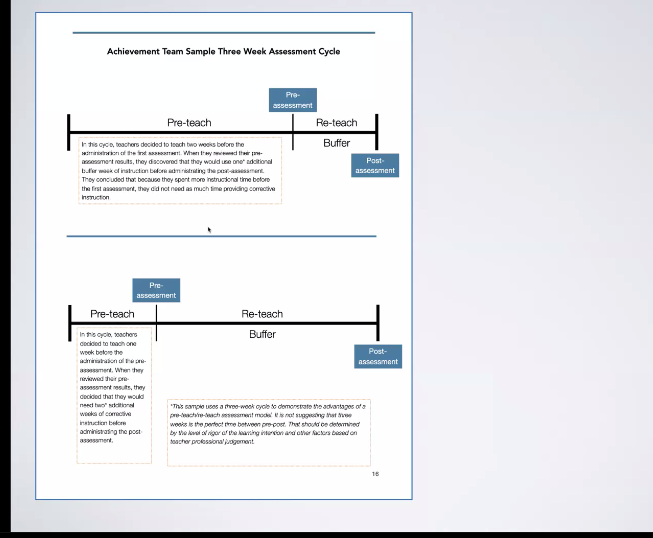Educators can kick professional learning communities into high gear by transforming them into achievement teams. Across the country, education consultants Steve and Michelle Ventura have noticed a gap between PLCs and actual implementation, so they created a four-step protocol that enhances collective teacher efficacy and shared in a recent ASCD webinar.
When the Venturas — an enthusiastic and energetic husband-and-wife team — asked webinar attendees what one thing has prevented collaboration at their schools, answers included a lack of trust, lack of openness, lack of communication and lack of respect, among others.
Achievement teams need buy-in
Steve pointed out that, to function effectively, achievement teams must have authenticity from participants — they need to want to be there. They also require collaboration so each person feels empowered when the meeting is over. Achievement team members must be analytical to determine the best ways to help students succeed. And they must be impact-driven; the goal is to implement what you discover.
The Venturas explained that their program borrows the basics of education researcher John Hattie’s Visible Learning research and his “mind frames” and highlights one in particular: Student assessment data should be used in a totally different way. The purpose is not to judge students’ abilities but to gauge the success of the teaching itself.
“Achievement change is about people, not programs. It is about staff, not stuff,” Steve said. “For every dollar we invest in the competence of teachers and leaders, we are going to get a greater gain and student achievement than if we were to apply another program.”
The key is focusing on the conversations and reflections that come out of the data rather than the data itself, Michelle noted.
The four steps
Step 1: Charting and collecting data. This can involve a lengthy pre-teach period before an initial assessment, followed by short re-teaching of what students didn’t understand and then the final assessment, which duplicates the first to ensure apples-to-apples data comparisons. Another option is to introduce the topic briefly, give the first assessment earlier, then spend a longer time teaching what the students didn’t know before giving them the final assessment.

Step 2: Goal-setting. One of the underlying messages from achievement teams is that teachers and students get to try again. “We’re actually encouraging a second opportunity to get things right,” Steve said. To do that, you need goals, which are developed between the assessments. Research shows that goals motivate teachers and students, and “students who create their own goals are more likely to perform better than students that do not have goals set,” Michelle said. “Goal-setting is truly the definition of metacognitive thinking because it helps students modify their learning behavior behavior and helps them self assess and have ownership in the learning.”
Step 3: Baseline evidence. This starts after the second assessment and is where the “rich, deep dive happens.” Based on the change in the number of students who are at an excelling, achieving, professing or beginning level of a particular topic, the achievement team together evaluates the teaching methods using the Venturas’ prompts to see what did and didn’t work and why, and ways to make the teaching better. This step isn’t about judgment or blaming. (See above where educators said trust and respect were thwarting their PLCs.) Team members must view this as a collaborative data-gathering process about strategies and implementation, not people, the Venturas noted.
This is the place where teachers eliminate worksheets and drilling and replace them with engaging learning scenarios. “It requires a foundational shift in thinking and learning.” to shift from “ just thinking about planning instruction, to engaging learning experiences and require a foundational shift in thinking and learning,” Steve said.

Step 4: Selected and select instructional strategies. Identify the instructional strategies that worked best during the second period of teaching, just before the last assessment.
The webinar participants chimed in again to answer the Venturas’ question about what prevents their existing PLCs from truly getting into the rigorous, collaborative work. “The two most common responses are lack of focus and time,” Steve said. However, by strictly adhering to the process they outline (which is far more detailed than this article), each achievement team meeting should only take about 45 minutes.
A video of the webinar will be available on the ASCD site soon, and more details are available at SteveVentura.com.
Diane Benson Harrington is an education writer at SmartBrief. Reach out to her via email, Twitter or LinkedIn.
Opinions expressed by SmartBrief contributors are their own.
_________________________
Subscribe to SmartBrief’s FREE email ASCD newsletter to see the latest hot topics in education. It’s among SmartBrief’s more than 250 industry-focused newsletters.
